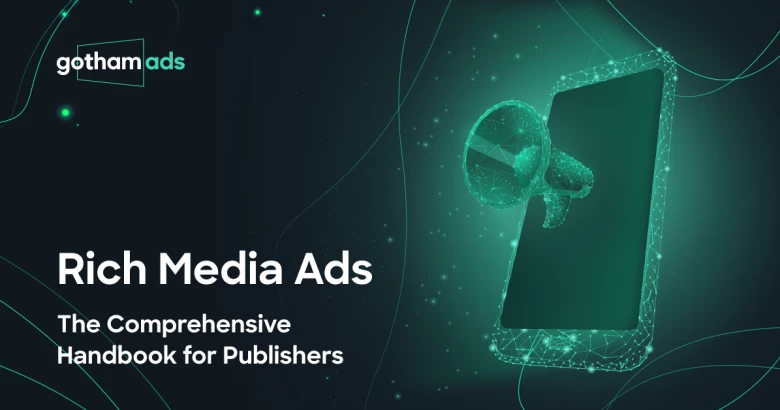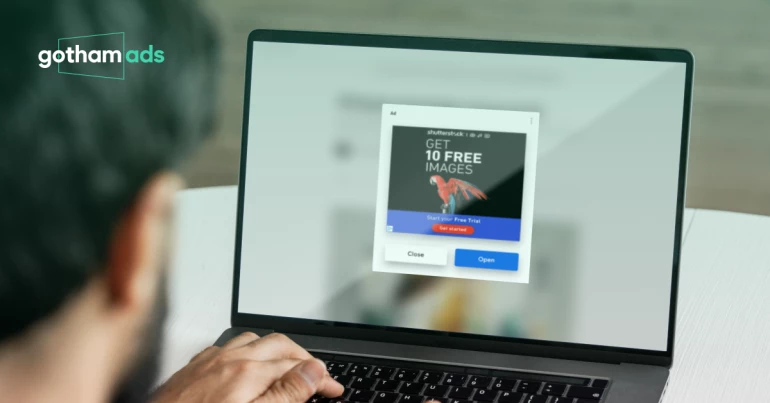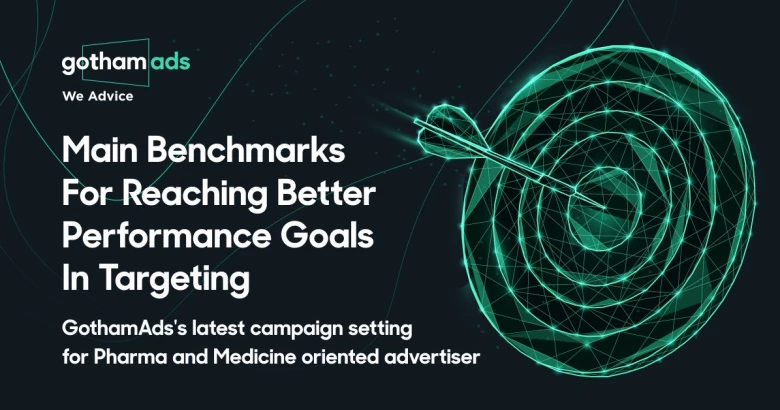Rich Media Ads: The Comprehensive Handbook for Publishers

Rich media ads encompass a diverse range of definitions, extending beyond the realm of online advertising. In the realm of mobile app marketing, these dynamic formats have gained significant popularity for driving installs and boosting engagement rates. This is due to the fact that rich media offers marketers the ability to craft interactive and captivating content for their target audience.
Rich media ads are highly favored by brands due to their interactivity, effectiveness, and ability to generate superior engagement rates. Rather than getting caught up in excessive analysis, let us explore the concept of rich media ads and discover how you can maximize their potential.
What Are Rich Media Ads
Rich media ads refer to digital advertisements that incorporate interactive elements such as audio, video, animations, or other engaging features. These ads provide a more dynamic and immersive user experience compared to standard banner ads.
Rich media ads offer various benefits for advertisers and publishers. They can capture users' attention more effectively, increase engagement rates, and deliver a higher level of interactivity. By utilizing multimedia elements, such as videos or interactive games, rich media ads aim to create a more engaging and memorable advertising experience for the audience. One study found that interactive ads generated an average CTR of 6.97% compared to 2.14% for non-interactive ads.
These ads can be displayed on various digital platforms, including websites, mobile apps, and social media networks. Rich media ad formats can include expandable ads, video ads, interactive ads, and other visually appealing and interactive formats that encourage user interaction. Research has shown that rich media ads can increase brand recall by up to 46% compared to static ads.
What Formats Does Rich Media Ads Include
Rich media ads can encompass a variety of formats that go beyond traditional static banners. Take a look at these popular rich media ad formats.
- Banner Ads
The most basic format of rich media ads is the banner. These ads are positioned at a fixed size and location on a website or app. They have the capability to include videos and utilize polite download technology, which means the ad's loading is deferred until the website or app has finished loading completely.

2. Expandable Ads
This is a type of advertising which expand automatically as and when user-based triggers happen—hover, click, or tap. Therefore, these ads are the most interesting format to watch till the end, leading to high CPMs and better viewability.

3. Interstitial Ads
An interstitial ad is a full-page ad that covers the publisher’s interface. It’s commonly used on mobile apps, during points of transition in the user flow. For instance, it might show up on a video game app when you click "Play Again." In some cases, the ad may not show an exit button until a few seconds after it initially appeared.

4. Pushdown Ads
Pushdown ads, while not fully expandable, share some similarities with expandable ads. By default, these ads are displayed in a preview mode and expand themselves downward when triggered by user-based actions. Unlike other overlay ad units, pushdown ads do not completely obstruct the underlying content, allowing it to remain visible.

5. Slider Ads
Slider ads move as and when the user interacts with the device screen. The slider feature moves along as the page scroll and settles once the page scrolling stops. These ads are usually hosted on SWF, IMG, or third-party codes.

What Are The Benefits Of Using Rich Media Ads
Using rich media ads offers several benefits for advertisers and publishers. With rich media ads, you may get help to attain a high interaction rate, better measurability, and scalability with in-depth metrics viz. number of users who viewed the video and percentage of video viewed, brand awareness/recall, and last but not the least, a memorable user experience.
Let’s delve into some key benefits of incorporating rich media ads:
- Higher Engagement
Rich media ads seize users' attention and foster active involvement through interactive elements, multimedia content, and visually captivating visuals. This heightened engagement prompts users to spend more time interacting with the ads, resulting in superior engagement rates when compared to conventional ads. Consequently, brand awareness is enhanced, and conversion rates are improved.
2. Enhanced Branding Opportunities
Using rich media ads, publishers gain a platform to showcase their brand’s creativity and uniqueness. The dynamic and visually appealing nature of these ads enables publishers to deliver their brand message in a more memorable and impactful way. This eventually fosters brand recognition and recall among the audience.
3. Increased CTR
The interactive nature of rich media ads often leads to higher CTRs. Users are more likely to click on an ad that captures their attention and offers an engaging experience. Studies have shown that rich media ads can achieve significantly higher click-through rates compared to static banner ads.
4. Flexibility in Ad Formats
The flexibility in ad formats allows publishers to experiment with different creative strategies and optimize their campaigns for better results. They can leverage interactive ads, expandable ads, video ads, and other innovative formats to tailor their ad campaigns to the specific needs of their target audience.
5. Mobile Optimization
Rich media ads are particularly effective in mobile advertising. With the increasing usage of mobile devices, rich media formats allow for a seamless and engaging experience on smaller screens, leveraging touch gestures and mobile-specific features to deliver interactive and visually appealing content.
6. Higher Ad Revenue Potential
With increased user engagement and improved ad performance metrics, publishers can attract premium advertisers who are willing to pay more for ad placements. This, in turn, can lead to higher ad revenue and increased profitability.
What Are The Disadvantages Of Advertising That You Should Know
While advertising can bring many benefits, it's important to be aware of potential disadvantages. For example, excessive or repetitive advertising can lead to ad fatigue, where consumers become immune or unresponsive to ads due to overexposure. This can diminish the effectiveness of advertising campaigns and result in wasted resources. Certain advertising formats, such as pop-up ads or auto-playing videos with sound, can be perceived as intrusive and disrupt the user experience. Intrusive ads may lead to negative brand perception and even drive users to actively avoid or dislike the advertised products or services. Moreover, many users employ ad-blocking software or browser extensions to avoid seeing ads altogether. This can significantly reduce the reach and impact of advertising, especially in digital channels.
One more disadvantage of rich media ads is costs. Advertising can be costly, especially for high-demand channels or during peak periods. The expenses associated with creating, distributing, and optimizing advertising campaigns can pose financial challenges, particularly for smaller businesses or those with limited marketing budgets.
Performance Measurement Metrics For Publishers
Rich media ads are interactive, so there are few specific metrics meant to measure the performance of rich media ad efforts:
- Interaction time: The average duration that users spend actively engaging with the ad.
- Display time: The average period during which the ad is visible on the web page.
- Interaction rate: The percentage of users or audience members who interact with the ad out of the total number of impressions.
- Dwell rate: The percentage of users who view specific ads and engage with them through actions like hovering, without necessarily clicking on the ad.
- Expansion rate: The ratio of ad expansions to the total number of ad impressions, applicable to expandable ad formats.
- Average view time: The average length of time that video ads are played compared to their total duration.
- Views and completions: The measurement of the number of times video ads are viewed from start to finish, providing insights into user interest.
- Pauses, rewinds, mutes, and closes: The tracking of user-initiated actions such as pausing, rewinding, muting, or closing video ads, which can provide valuable data on user behavior.
- Custom events: The monitoring of specific user interactions, such as mouse hover, downloads, or other predefined events, allowing for tailored tracking and analysis.
In conclusion, it's important to notice that rich media ads offer numerous benefits for advertisers and publishers. They provide higher engagement rates, enhanced brand awareness, and increased click-through rates. The flexibility in ad formats allows for creativity and experimentation, while mobile optimization ensures a seamless experience on smaller screens. Rich media ads also have the potential to generate higher ad revenue. However, it's important to consider the potential disadvantages, such as ad fatigue, intrusive formats, ad blocking, and associated costs. By carefully balancing these factors and implementing effective advertising strategies, advertisers and publishers can maximize the benefits of rich media ads while mitigating potential drawbacks.
Contact us if you want to know more about rich media ads.


